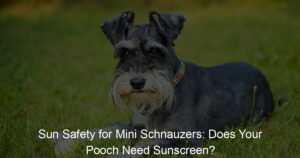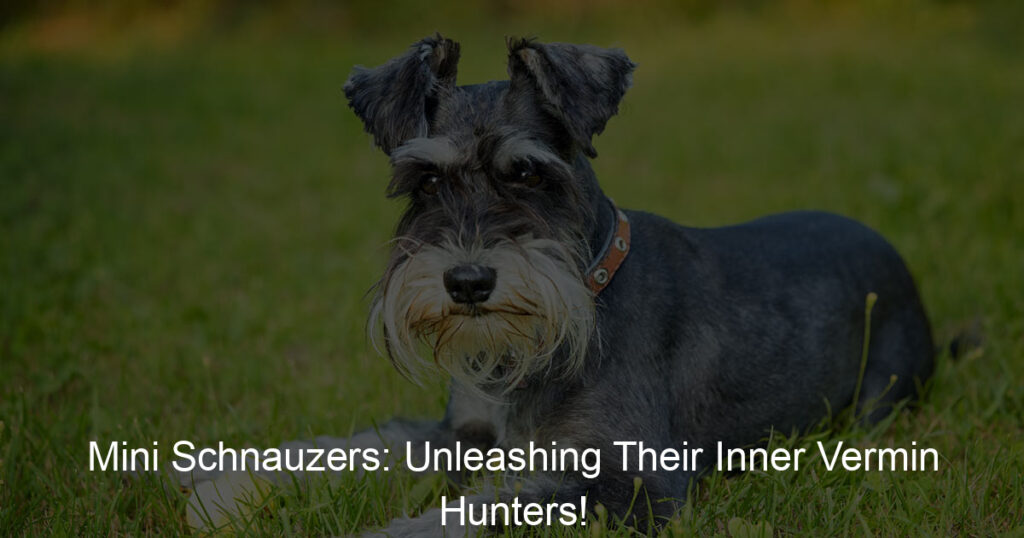Miniature Schnauzers are adorable dogs that are known for their unique appearance. Bumps on their bodies are hair follicles that are more pronounced than in other breeds.
While they may look strange, they are pretty normal and help give the Miniature Schnauzer its characteristic look.
How Do You Get Rid of Schnauzer Bumps?
If you are not a fan of the bumps on your Miniature Schnauzer, there is no need to worry. However, there are a few options that you can choose from to get rid of them.
Shave the bumps off. This will give your dog a completely different look, but you may be interested in it.
Another option is to use a special shampoo designed to reduce the appearance of bumps. There are a few different brands that offer this type of shampoo.
Do Miniature Schnauzers Shed?
Many people are concerned about whether or not Miniature Schnauzers are shed. The good news is that they do not shed much. They are considered one of the breeds that shed the least amount of hair.
This is good news for those allergic to dog hair or who do not want to deal with shedding.
While Miniature Schnauzers are generally a low-shedding breed, some individuals may shed more than others. If you are concerned about shedding, you should talk to your veterinarian about which dogs are more likely to shed and how you can reduce the amount of Shedding that occurs.
Why Is My Schnauzer So Itchy?
There are a few reasons why your Schnauzer is constantly scratching. First, you will need to work with your veterinarian to find a food that does not contain the ingredients your dog is allergic to. You may also need to give your dog medication.
Another possibility is that your dog has mites. Mites are tiny creatures that can live on the skin of dogs. They can cause itchiness. If you think your dog has mites, you should take it to the vet to treat it.
No matter the reason for your dog’s itchiness, it is crucial to seek medical attention if the problem persists. Itching can be a sign of a more serious underlying condition, and you will want to make sure that your dog is healthy.
What Are Mini Schnauzers Allergic To?
While Mini Schnauzers are generally a healthy breed, there are some things that they can be allergic to. One of the most common allergies in dogs is an allergy to chicken.
If your dog is allergic to chicken, you will need to find food that does not contain chicken or other poultry products. Other common allergies include beef, wheat, corn, and soy.
If you think your dog may be allergic to something, it is important to talk to your veterinarian. They will be able to test your dog for allergies and determine which foods are safe for them to eat.
Once you know what your dog is allergic to, you can take steps to avoid those substances and keep your pet healthy.
Are Schnauzers Prone to Cysts?
Cysts are not common in Miniature Schnauzers, but they can occur. If your dog does have a cyst, it is important to have it checked by a veterinarian. Cysts can be benign or malignant, and you want to ensure your dog is healthy.
There are a few things that you can do to help prevent cysts from forming. One thing that you can do is to make sure that your dog is getting all of the necessary nutrients.
A good diet will help to keep your dog’s skin healthy and will also help to prevent cysts from forming.
How Do You Stop a Sebaceous Cyst From Growing?
A sebaceous cyst is a small, round, benign growth that develops beneath your dog’s skin. They are filled with a yellowish, oily substance called sebum.
Cysts can range in size from a pea to a grape, and while they are not cancerous, they can become infected and cause your dog discomfort.
Your veterinarian may recommend surgical removal, especially if the cyst is large or causing pain. If the cyst is small, your vet may suggest leaving it alone. In some cases, the cyst will go away on its own.
You can also try some home remedies to treat a sebaceous cyst. However, be sure to consult with your veterinarian before trying any of these methods, as some may be harmful to your dog.
One home treatment you can try is applying a warm compress to the area several times a day. This will help draw out the pus and sebum from the cyst. You can also try gently massaging the area to help break up the cyst’s contents.
If the cyst is small and not causing discomfort, leave it alone and see if it goes away on its own. If it grows larger or becomes infected, you should take your dog to the vet for treatment. Surgery is usually the best option for large or infected sebaceous cysts.














